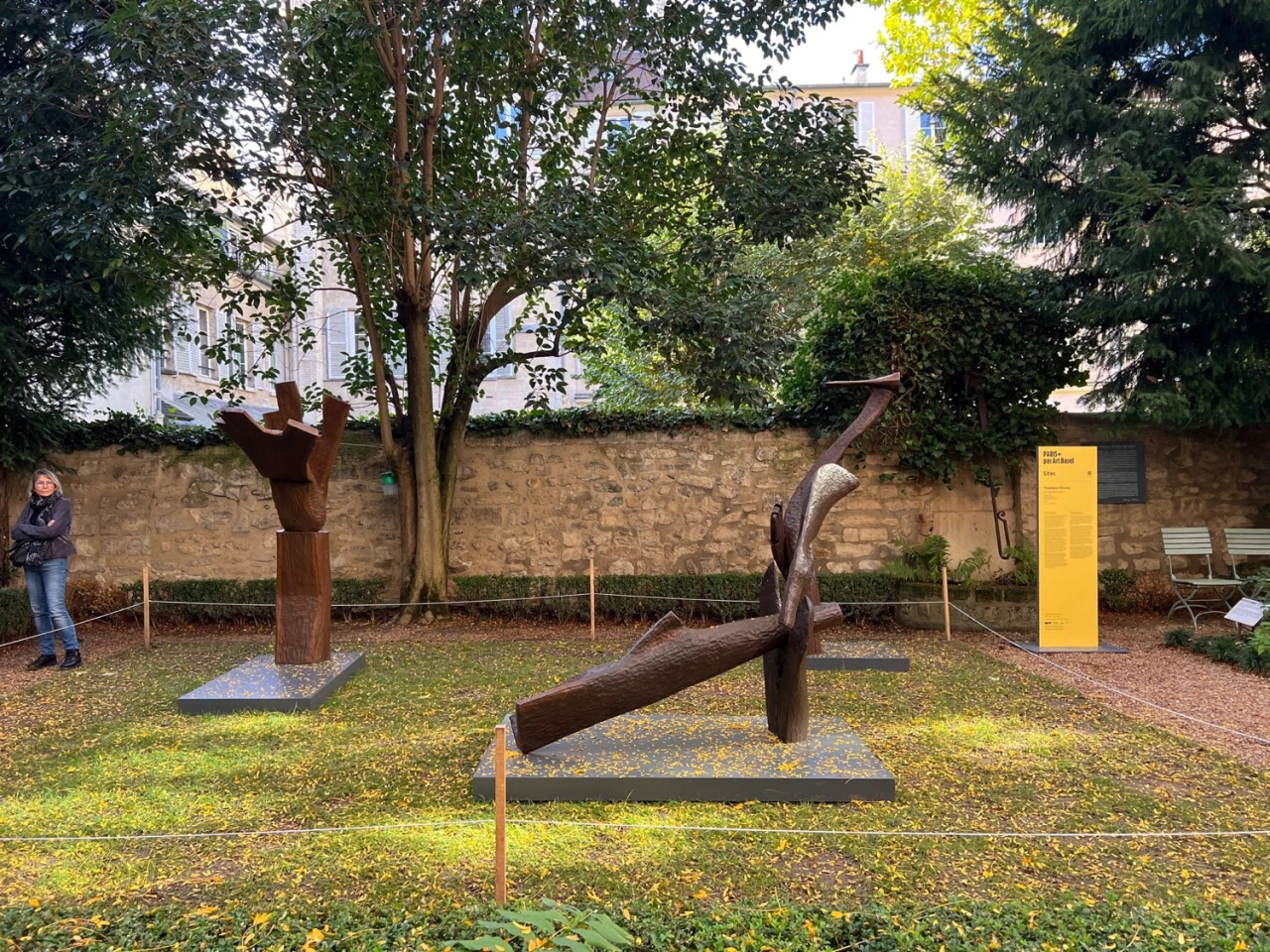
October 20, 2022
Download as PDF
View on ARTnews
FIAC had the Hors-les-murs (off-site) section. Paris+ par Art Basel has Sites, which spreads out to four iconic locations this year.
At the Place Vendôme, one of Paris’ five royal squares, Alicja Kwade’s part spherical, part angular installation has become a TikTok favorite, even if it doesn’t quite match the surrounding facades.
Meanwhile, at the Jardin des Tuileries, the 21 installations on view almost completely blend in, except except for Niki de Saint Phalle’s bright blue obelisk. They are part of ‘La Suite de l’Histoire’ (The Continuation of History), an exhibition curated by Anabelle Ténèze, the director of the Abattoirs, Musée – Frac Occitanie Toulouse, which questions the role of art in public spaces.
Sites stretches down to the Left Bank of Paris, with wood sculptures by Thaddeus Mosley showcased at the Musée national Eugène-Delacroix and an immersive project put together by Omer Fast at the Chapelle des Petits-Augustins, which is part of the Beaux-Arts de Paris, for the first time involved in the program of Paris’s main international art fair. Students from the École du Louvre were assigned to guide visitors and inform them on the works on display.
Below is a pick of ARTnews‘ top 6 installations.
Thaddeus Mosley
Sites continues in the 6th arrondissement; and the “Suite de l’Histoire” program, at the Musée Delacroix located on Place Furstenberg, one of Paris’s quaintest squares. Past the entrance, right up the stairs is Eugène Delacroix’s former bedroom where he died from tuberculosis. “And yet this is the most dynamic space in the museum,” one of the lighting engineers said, while adding final touches to the display. This is where contemporary art keeps rotating.
Last week, it was filled with work by Beaux Arts de Paris students. Now it welcomes Thaddeus Mosley’s very first show in the French capital, which essentially consists of a new body of sculptures. Unlike the bronzes gathered in the garden, the walnut pieces inside are unexpectedly small.
The 96-year-old African American artist, known for his monumental formats meant for outdoor spaces, has drawn inspiration from Constantin Brâncuși, but also from West and Central African traditions. The starting point of his works are fallen trees which he then carves with the sole use of a mallet and chisel into biomorphic shapes, a process he compares to Jazz improvisation. Painter Sam Gilliam, who died earlier this year, once said he sees Mosley as a“jazz critic, postman, father, keeper of trees anywhere -/ old trees, round trees, big trees, heavy trees.”



